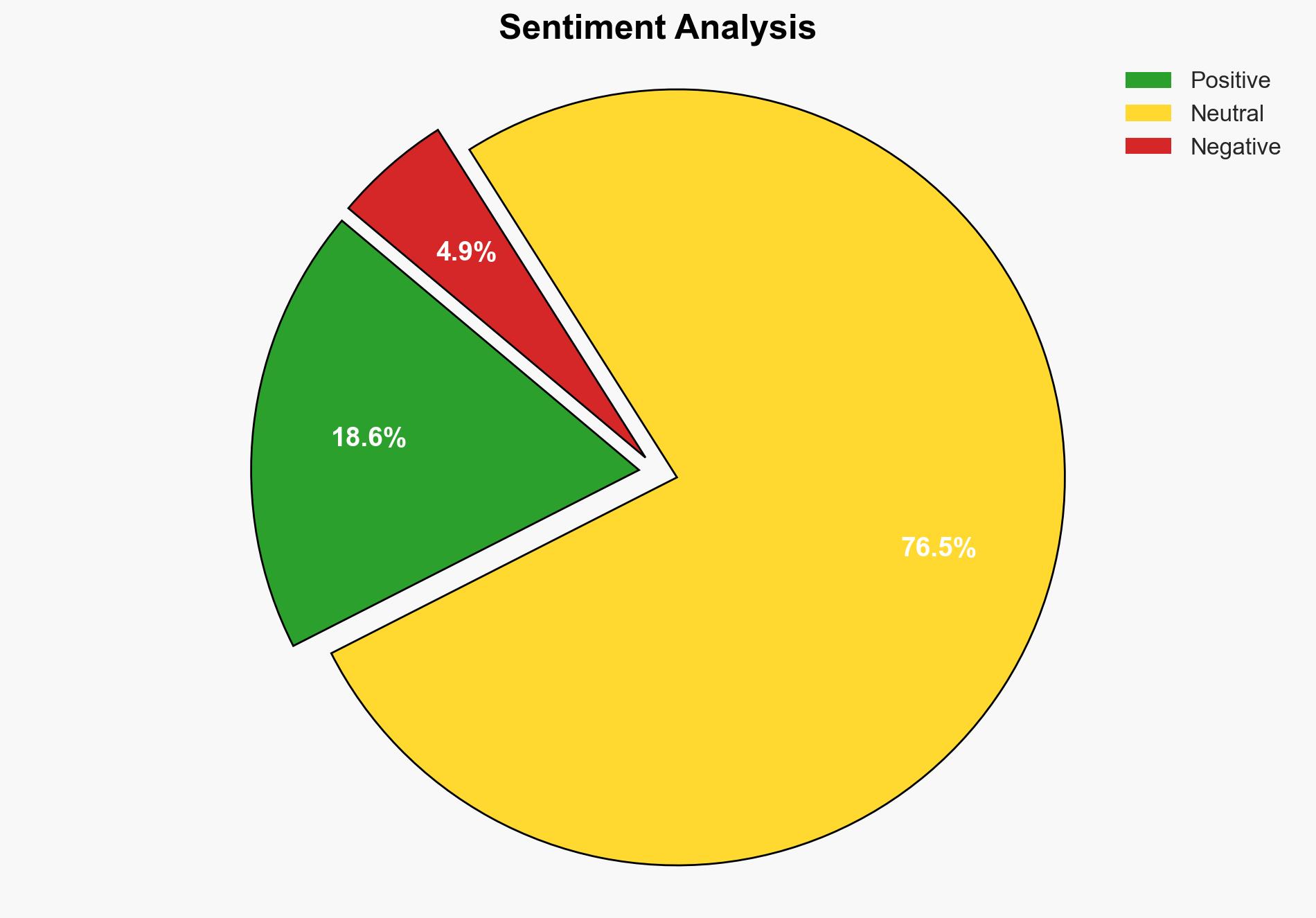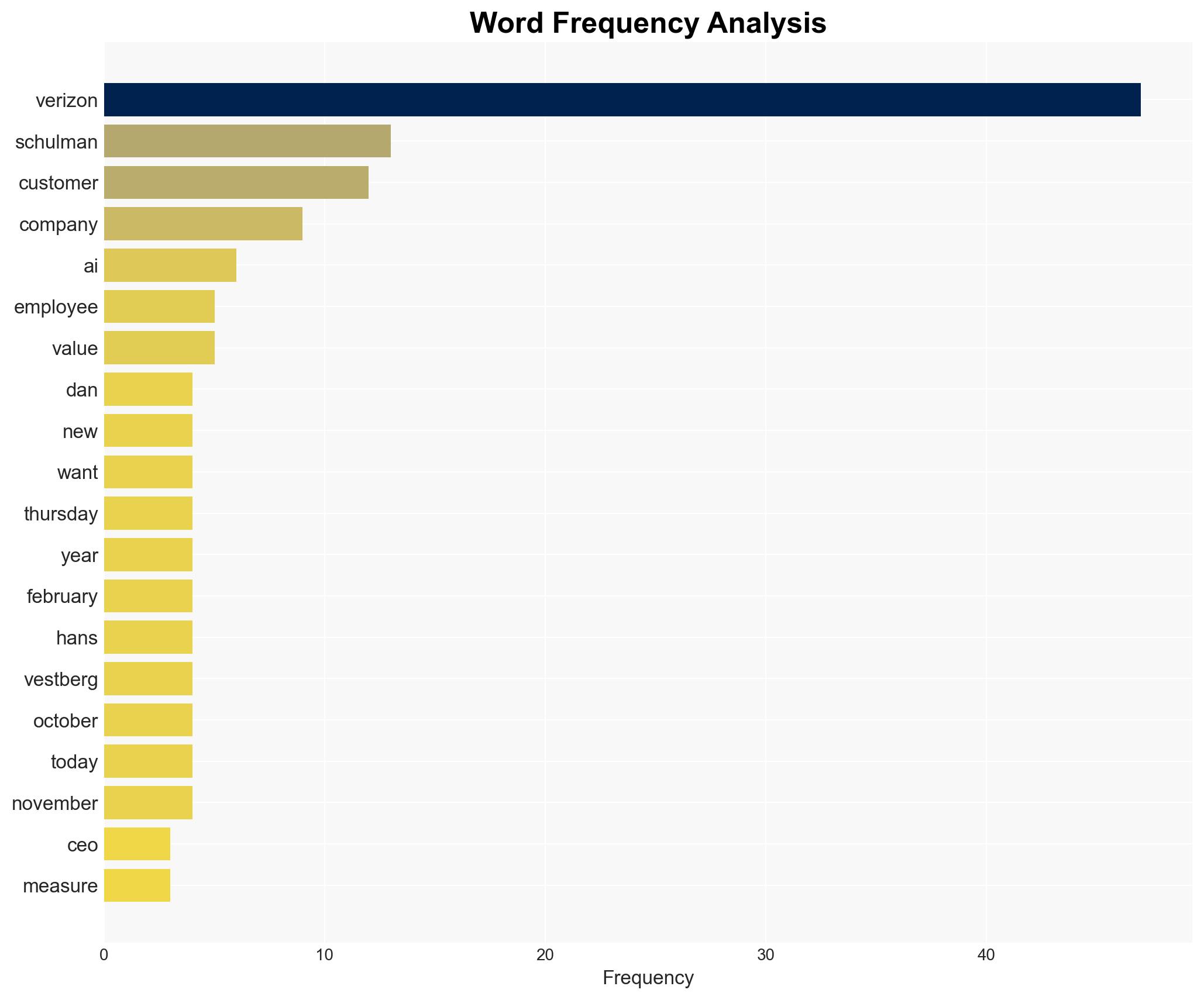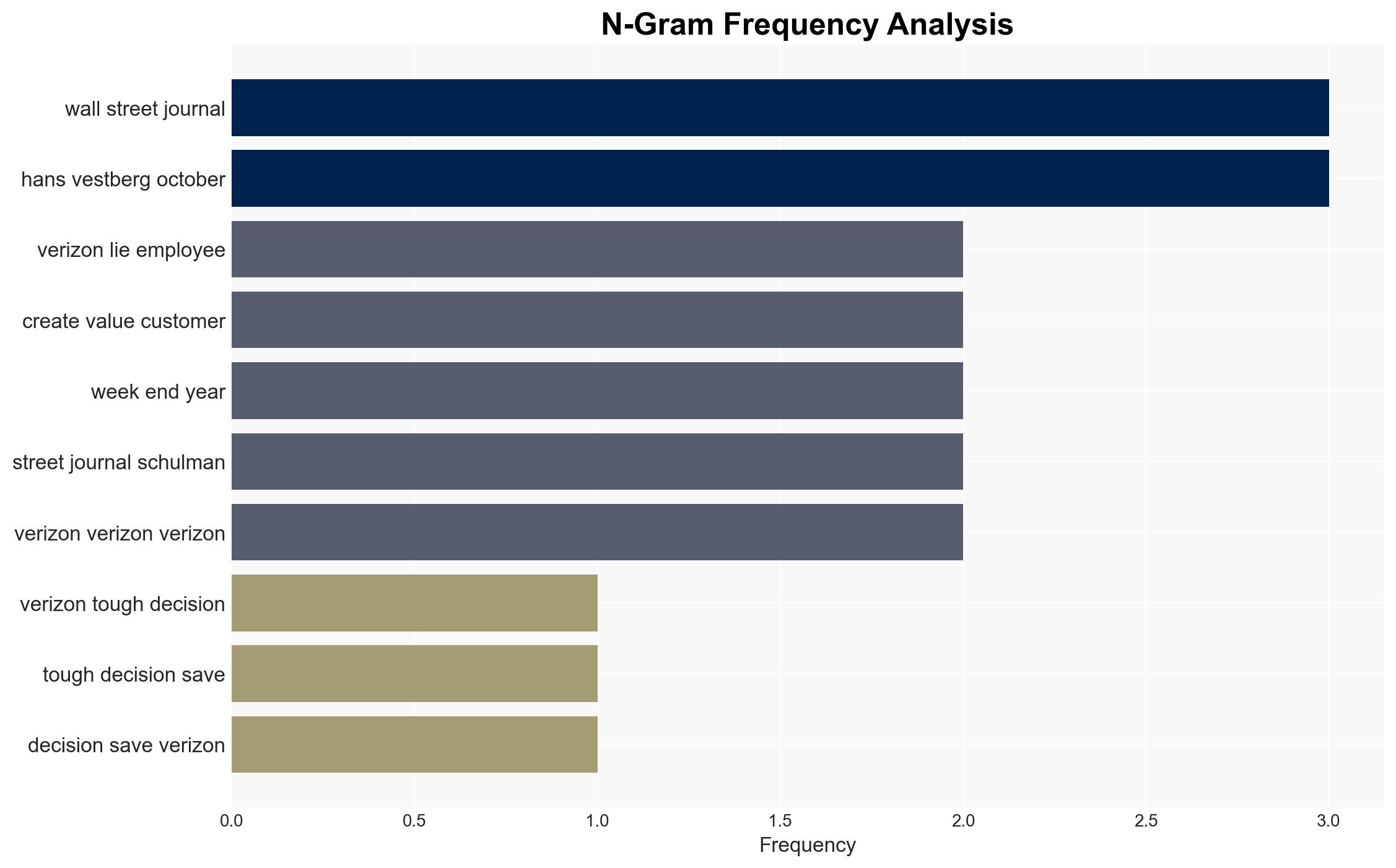Verizon makes a tough decision that might just save it – PhoneArena
Published on: 2025-11-21
AI-powered OSINT brief from verified open sources. Automated NLP signal extraction with human verification. See our Methodology and Why WorldWideWatchers.
Intelligence Report: Verizon’s Strategic Restructuring
1. BLUF (Bottom Line Up Front)
Verizon’s decision to downsize and restructure is a strategic move aimed at regaining market leadership and improving customer satisfaction. The most supported hypothesis is that these measures will stabilize Verizon’s financial position and enhance its competitive edge. Confidence Level: Moderate. Recommended action includes monitoring the implementation of these changes and assessing their impact on customer retention and market share.
2. Competing Hypotheses
Hypothesis 1: Verizon’s restructuring will successfully reduce costs and improve operational efficiency, leading to enhanced customer satisfaction and market leadership.
Hypothesis 2: The restructuring will create short-term operational disruptions and customer dissatisfaction, potentially leading to further loss of market share.
Hypothesis 1 is more likely due to the strategic focus on aligning resources with customer value and market leadership goals. However, the success of this hypothesis is contingent on effective execution and communication of changes.
3. Key Assumptions and Red Flags
Assumptions: The restructuring will be executed efficiently without significant operational disruptions. Customers will respond positively to improved service offerings.
Red Flags: Potential for internal resistance to change, misalignment of new strategies with customer expectations, and reliance on AI tools that may degrade customer service.
4. Implications and Strategic Risks
The restructuring could lead to short-term operational challenges and employee morale issues, potentially affecting service quality. Economically, failure to achieve cost reductions could strain financial resources. Politically, negative public perception could arise if layoffs are perceived as mishandled. Informational risks include potential misinformation about Verizon’s strategic direction.
5. Recommendations and Outlook
- Ensure transparent communication with employees and customers to mitigate resistance and misinformation.
- Monitor AI tool implementation to ensure it enhances rather than degrades customer service.
- Best-case scenario: Successful restructuring leads to regained market leadership and customer satisfaction.
- Worst-case scenario: Operational disruptions and customer dissatisfaction result in further market share loss.
- Most-likely scenario: Initial challenges are overcome, leading to gradual improvements in efficiency and customer perception.
6. Key Individuals and Entities
Dan Schulman (CEO), Alfonso Villanueva (Executive Vice President, Chief Transformation Officer).
7. Thematic Tags
Cybersecurity, Corporate Restructuring, Market Leadership, Customer Satisfaction
Structured Analytic Techniques Applied
- Adversarial Threat Simulation: Model and simulate actions of cyber adversaries to anticipate vulnerabilities and improve resilience.
- Indicators Development: Detect and monitor behavioral or technical anomalies across systems for early threat detection.
- Bayesian Scenario Modeling: Quantify uncertainty and predict cyberattack pathways using probabilistic inference.
Explore more:
Cybersecurity Briefs ·
Daily Summary ·
Support us





